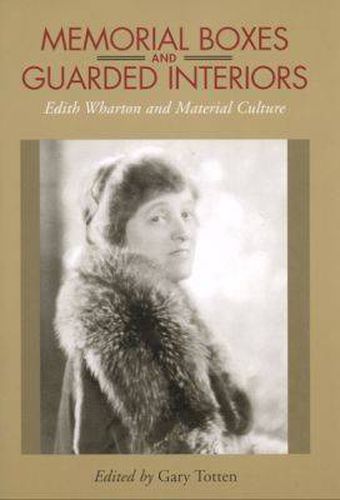Readings Newsletter
Become a Readings Member to make your shopping experience even easier.
Sign in or sign up for free!
You’re not far away from qualifying for FREE standard shipping within Australia
You’ve qualified for FREE standard shipping within Australia
The cart is loading…






In Edith Wharton’s works, references to architecture, interior decoration, painting, sculpture, and fashion abound. As these essays demonstrate, art and objects are for Wharton evidence of cultural belief and reflect the values, assumptions, and customs of the burgeoning consumer culture in which she lived and about which she wrote. Furthermore, her mediations about issues of architecture, design, and decoration serve as important commentaries on her vision of the literary arts. In
The Decoration of Houses , she notes that furniture and bric-a-brac are often crowded into a room in order to compensate for a
lack of architectural composition in the treatment of the walls,
and that unless an ornamental object
adequately expresses an artistic conception
it is better removed from the room. These aesthetic standards apply equally to her construction of narratives and are evidence of a sensibility that counters typical understandings of Wharton as a novelist of manners and place her instead as an important figure in the development of American literary modernism. Essays in this collection address issues such as parallels between her characters and the houses they occupy; dress as a metaphor for the flux of critical fashion; the marketing of Wharton’s work to a growing female readership; her relationship to mass culture industries such as advertising, theater, and cinema; the tableaux vivant both as set piece and as fictional strategy; the representation of female bodies as objets d'art; and her characters’ attempts at self-definition through the acquisition and consumption of material goods. Many of Wharton’s major novels -
The House of Mirth ,
The Fruit of the Tree ,
The Custom of the Country ,
Summer ,
The Age of Innocence , and
Twilight Sleep
- as well as her short stories, criticism, and essays are explored.
$9.00 standard shipping within Australia
FREE standard shipping within Australia for orders over $100.00
Express & International shipping calculated at checkout
In Edith Wharton’s works, references to architecture, interior decoration, painting, sculpture, and fashion abound. As these essays demonstrate, art and objects are for Wharton evidence of cultural belief and reflect the values, assumptions, and customs of the burgeoning consumer culture in which she lived and about which she wrote. Furthermore, her mediations about issues of architecture, design, and decoration serve as important commentaries on her vision of the literary arts. In
The Decoration of Houses , she notes that furniture and bric-a-brac are often crowded into a room in order to compensate for a
lack of architectural composition in the treatment of the walls,
and that unless an ornamental object
adequately expresses an artistic conception
it is better removed from the room. These aesthetic standards apply equally to her construction of narratives and are evidence of a sensibility that counters typical understandings of Wharton as a novelist of manners and place her instead as an important figure in the development of American literary modernism. Essays in this collection address issues such as parallels between her characters and the houses they occupy; dress as a metaphor for the flux of critical fashion; the marketing of Wharton’s work to a growing female readership; her relationship to mass culture industries such as advertising, theater, and cinema; the tableaux vivant both as set piece and as fictional strategy; the representation of female bodies as objets d'art; and her characters’ attempts at self-definition through the acquisition and consumption of material goods. Many of Wharton’s major novels -
The House of Mirth ,
The Fruit of the Tree ,
The Custom of the Country ,
Summer ,
The Age of Innocence , and
Twilight Sleep
- as well as her short stories, criticism, and essays are explored.